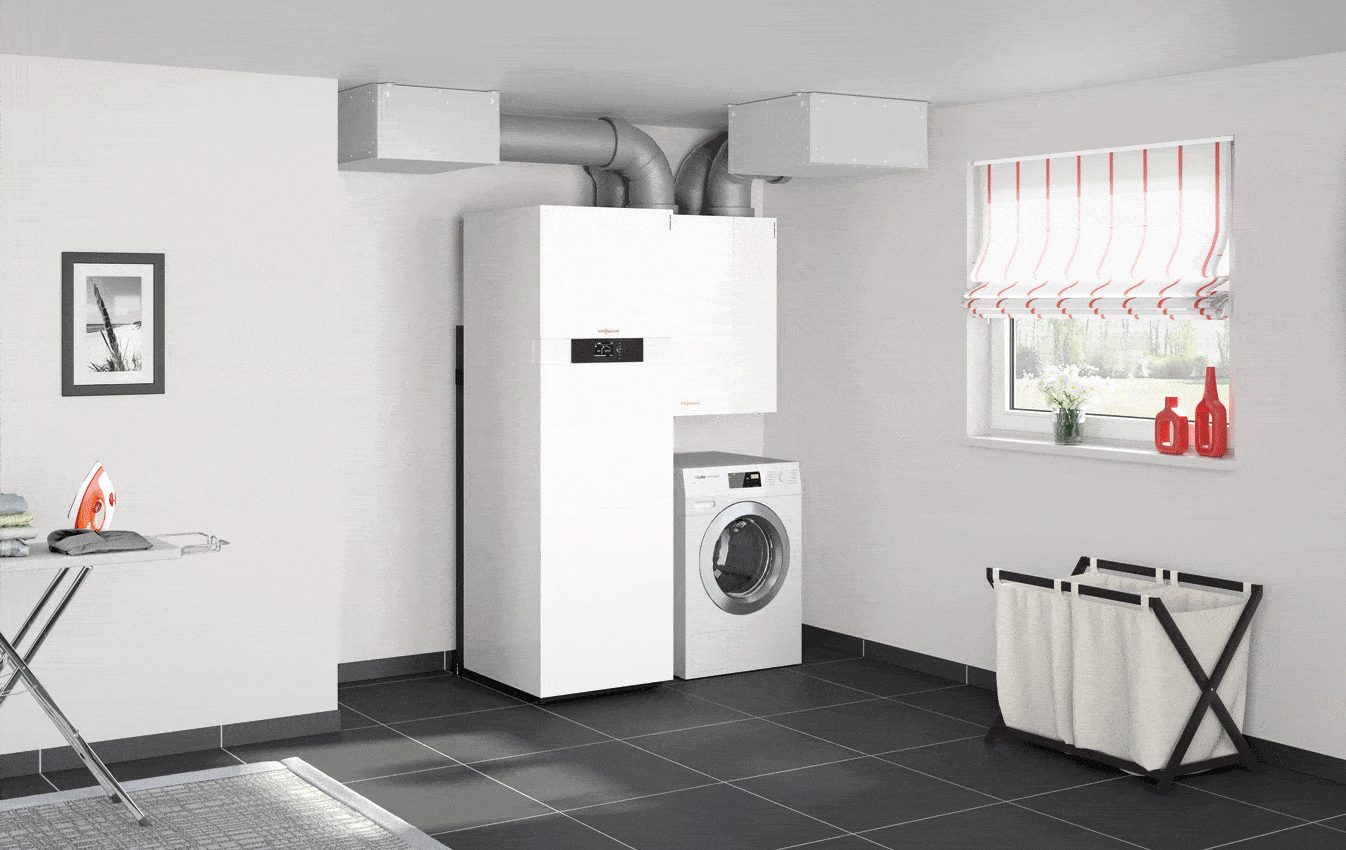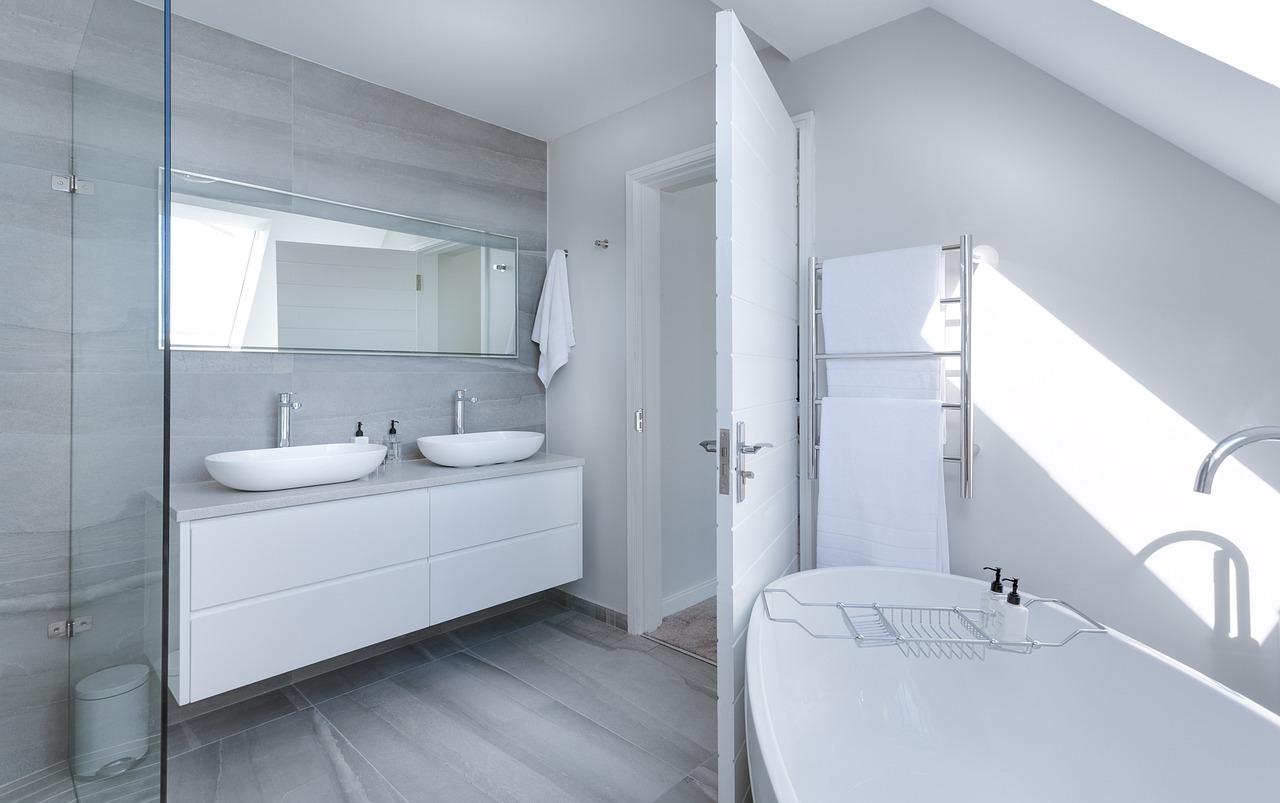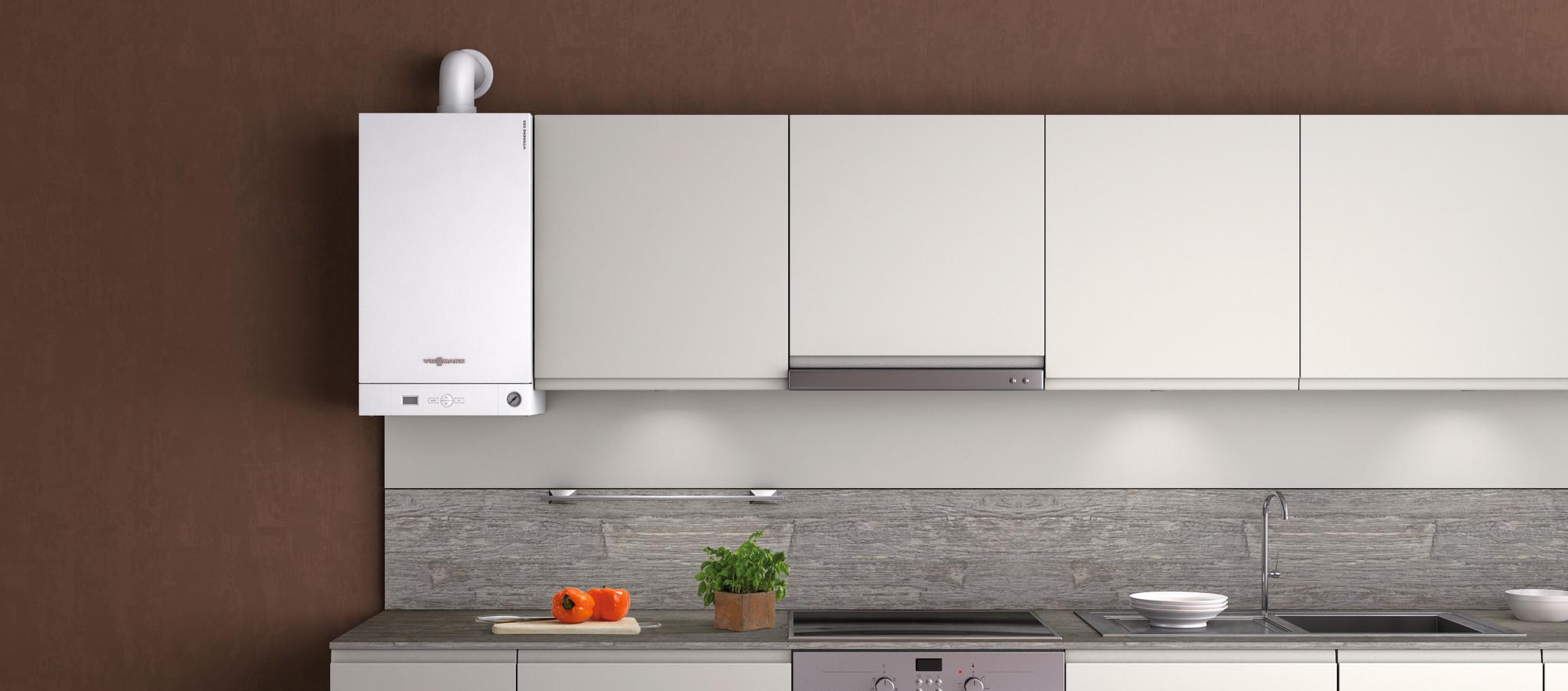Specialist Heating Advice, Tips & Tricks

What is a system boiler?
In this article, we look at what a system boiler is, give an overview of how they work and look at some of the key reasons you may wish to consider having one installed.

The system boiler explained
What’s the difference between a system boiler and a combi boiler?
A combi or ‘combination’ boiler is responsible for providing both your heating and hot water within a single, compact unit. They are often a good choice for flats and family homes, especially where space limitations mean that it is not possible to accommodate a header tank or separate hot water cylinder.
There are, however, limitations to combi boilers. In particular, they are not well suited to homes that have a high demand for hot water as they are only designed to support one outlet at a time. Because combi boilers typically switch the burner from heating to hot water when there is demand, heating performance can also be impacted in high demand households.
A system boiler, in contrast, features a separate cylinder for storing hot water. Although the major heating and hot water system components are built into the boiler, the hot water is stored in the cylinder. This means that a constant supply of hot water can be provided to a large number of taps and showers at the same time. This makes it the ideal choice for a home with multiple bathrooms.
Is a system boiler the same as a regular boiler?
Because of the separate hot water storage cylinder, it is easy to mistake a system boiler and a regular boiler (also commonly known as a conventional or traditional boiler). There are, however, some fundamental differences. A system boiler is a closed system that only requires a boiler and a cylinder, whilst a regular boiler requires header tanks in the loft to feed the hot water cylinder and to maintain the water level in the radiators.For this reason, system boilers are often the preferred choice unless there are specific reasons why a regular boiler may be more suitable, such as in areas with low water pressure or homes with older radiator systems that would be unsuitable for the higher pressure of a system boiler.
How does a system boiler work?
In a system boiler, cold water enters the boiler directly from the mains supply. The water is heated via a heat exchanger, which transfers energy from the gas jets to the water. Once heated, the water is pumped to the hot water cylinder, where it is stored until required. Because there is a large reservoir of hot water always available, a steady supply can be maintained even if multiple taps or showers are in use.
Other factors to consider
How much space does a system boiler need?
One of the most important considerations when considering a system boiler is whether or not you have sufficient space. If your house has been built with an airing cupboard, this can be the ideal place to house the hot water cylinder – but be aware that you will lose the use of this space as a storage space.
Remember, you’ll also need to account for the additional space required by the cladding. As system boilers do not require header tanks to be fitted in the attic, they are suitable for homes with no loft space or where a loft conversion has been done or is planned.
How efficient are system boilers?
With condensing technology, the boiler itself is extremely efficient, with many models achieving up to 90% efficiency in optimum conditions. A very important consideration with a system boiler is the potential for heat loss from the hot water cylinder. To combat this, it is important that your cylinder is properly insulated for maximum efficiency. Because all taps and showers will receive near instant hot water at the same pressure, a system boiler can also help optimise your home’s water consumption.
Can a system boiler run out of hot water?
The only limitation to the amount of hot water a system boiler can supply is the capacity of the hot water cylinder. If all the hot water is used, you’ll have to wait for more to be heated. This is usually on a set timer. In order to guarantee sufficient water, it is recommended that you consider how much water is likely to be used at any given time for things like showers, baths and taps when sizing your cylinder. Be aware, however, that in many cases the size of cylinder you choose will ultimately be dictated by the space available.
Why is my boiler making noises?
For the vast majority of the time, our boiler is something that we take for granted. As long as it keeps on working properly and we have a constant supply of hot water and heat as required, there is little to be done in the way of maintenance, apart from the annual check. However, as with any piece of equipment, things can and do go wrong from time to time – and an unfamiliar or unexpected noise is often the first sign.
Such noises can occur even if everything seems to still be working properly, but a noisy boiler should never be ignored. For many people, they can be very worrying. Even the smallest of noises can also cause problems such as frustration and sleeplessness, which adds to the stress.
So what are the common reasons why your boiler is making a noise and what can you do to solve the problem? Let’s take a closer look.
 © Aaron Amat / Shutterstock.com
© Aaron Amat / Shutterstock.comIdentify the source of the noise
Sounds can sometimes be misleading, especially inside houses. The first step when faced with a noise in the system is to identify exactly where the sound is coming from. Because sounds can travel and echo through the heating and water system, it is important to first establish if it is actually a noisy boiler, or a noisy radiator or central heating pipe, each of which can have different causes.
If you are happy that the noise is coming from the boiler, then the following steps will help you.
Boiler error codes
Many modern boilers now come with digital displays which include error codes. Before spending time to diagnose problems yourself, familiarise yourself with the product manual as this could save valuable time.
If you don’t have the original manual, an online search with the make and model number can often find an online version. For Viessmann boilers, most possible fault codes can be found on our dedicated fault code identifier page. However, be aware that not all problems will generate an error code so the following steps may still be necessary.
The boiler is gurgling
A small amount of gurgling within a boiler is fairly common and is no cause for significant concern. However, if the gurgling becomes constant or is loud enough to catch your attention, this is a sign that something may need adjusting. In some cases, a gurgling sound may be mistaken for the sound of water boiling within – this is unlikely to be the case so don’t panic. Take the following steps to diagnose and eliminate the problem, if you are confident to do so:
1. Bleed the system
In most cases, gurgling noises that may appear to originate in the boiler are actually caused by air elsewhere in the system. This is very common and can be easily remedied by bleeding the system. There is no need to get an expert involved, all you need to do is follow a few simple steps:
- Fully open all radiator thermostats and run the heating at full temperature for 10-15 minutes with all radiators on
- Turn the circulation pump off and wait until radiators are cool – usually 30-60 minutes
- Bleed the radiator nearest the boiler using a bleed key or screwdriver until water comes out
- Repeat this for each radiator
- Turn on the boiler and check the water pressure (see below).
If you are unsure about bleeding the system or encounter difficulties at any point, it is advisable to contact a professional at the earliest instance.
2. Check the water pressure
If the water pressure is too low, this may be the culprit of your gurgling noises. Your boiler will have a pressure gauge, also known as a manometer, located in the area where the pipes are connected to the boiler itself. Most modern pressure gauges will be marked with the correct pressure level, although you may need to consult the manual. If it is too low, then increase the pressure until it is restored to the correct level. This may require a topping up of the water level.
3. Check the circulation pump
If the noises continue after you have taken the previous actions, there is a possibility that the problem may lie in the circulation pump. In most cases, the noise will be caused by this pump operating at an excessive speed. If the boiler has an option to slow it down, this may solve the problem. It may, however, be necessary to have a trained engineer perform this task.
The boiler is ‘whooshing’ or vibrating
A boiler that begins to make loud ‘whooshing’ noises and vibrate excessively can be very scary, however the actual cause may be quite simple to diagnose and fix. Whilst there is no immediate danger, allowing the problem to persist can cause further damage so immediate action should be taken.
1. Check the air intake/flue
The most frequent cause of a loud whooshing sound is a blockage to the air intake. Check the external pipe on your building to make sure that there is nothing blocking it and remove any obstructions such as foreign objects or fluff. If you place your hand over the vent, you should be able to detect a certain amount of air movement.
2. Check the air filter
A blocked air filter is now one of the most common causes of boiler problems. The air filter in a boiler is not unlike the filters you will find in a vacuum cleaner or car. If the air filter is user-serviceable, remove it and clear it of any dirt build up with a vacuum cleaner or dry brush. It may be necessary to engage the services of a professional for this step.
The boiler is buzzing or whining
A buzzing or whining sound coming from inside your boiler is a genuine cause for concern that is typically caused by worn pump bearings, a defective burner or vibrating fans. Unfortunately, these are all problems that should only be diagnosed and remedied by a qualified professional. Action should be taken sooner rather than later to prevent further damage.
Stay safe
Remember that you should only perform routine maintenance on your boiler if the manual instructs or advises you to do so. These tasks always involve accessible areas and will never require the use of special tools to access any sealed parts of the equipment.
How to bleed a radiator
 © Andrey Popov / Shutterstock
© Andrey Popov / ShutterstockWhat does bleeding a radiator mean?
Bleeding a radiator (also sometimes called bleeding a boiler) means letting out air that has become trapped inside your system, it’s a common issue in un-vented heating systems. Trapped air prevents water from heating your whole radiator, creating cold spots. Sometimes you will hear a flowing or clucking sound coming from your radiator, this is also a good indicator that you need to bleed your boiler system.
If you touch the top section of your radiator, does it feel cooler than the bottom half? This means your heating system is working inefficiently. As your boiler works with your radiators, you’re paying for heating but not enjoying the benefits.
Fortunately, you can easily bleed your radiators yourself, making your home cosy and warm.
Our step-by-step guide to bleed a radiator
Venting heating systems is straightforward, just follow the steps below:
If you’re looking to bleed air from radiator systems you’ll need the following tools:
- A radiator bleed key – used to open up the radiator vent valve (available from most hardware stores)
- A cloth or towel – to catch drips
Necessary steps
Step one – Turn your heating on
Before bleeding, you first need to turn the heating on so that all the radiators warm up. This builds pressure in your radiator that will push the unwanted air out.
Step two – Identify which radiators need bleeding
Go through your whole house checking each radiator for cold spots.
What are the signs that the radiator needs bleeding? If you can hear gurgling sounds, the radiator takes a long time to heat up or there are cold spots then it is likely there is trapped air. This is preventing the hot water from filling the radiator; you will need to bleed that radiator.
Remember: The radiators will be hot, so take extra care with this step. We advise wearing a pair of thin gloves so you do not burn yourself.
Step three – Turn off your central heating
Do not forget: You need to switch off your central heating before you bleed a radiator. If your heating is on you’ll risk scalding yourself and covering the floor with water.
Step four – Prepare the area
Water may be discoloured when bleeding an old radiator, by putting old towels down you can save a cleaning job later, especially if you have light carpets!
Step five – Open up the radiator bleed valve
Take the radiator bleed key, you’ll need to insert this into the bleed valve. Often the bleed valve (or nipple) is found at the top of the radiator, to the side. It looks like a round hole with a square inside. When you insert the radiator key into the bleed valve, you will feel them lock together.
Carefully turn the valve anti-clockwise – as the air begins to escape you’ll hear a hissing sound. Be careful, the escaping air could be hot, keep sufficient distance.
Tip: If you do not have a radiator vent key it is sometimes possible to use a flat-headed screwdriver on modern radiators.
Step six – Bleed the radiator
A quarter to half a turn will be enough, never open the valve fully because once you bleed air from the radiator water will come rushing out.
Continue this process, holding the radiator bleed key until the air stops coming out. When only water is dripping from your radiator, then you have completed the bleeding process. Turning the bleed valve clockwise will seal the radiator; take care not to over tighten.
Modern bleed valves may release water as a ‘jet’. Turn your bleed valve key with care, and be prepared to quickly close the bleed valve.
Step seven – Repeat the process on all radiators
You will need to bleed all the radiators in your property. We suggest starting on the ground floor and working your way up your property because the air rises through the system.
Step eight – Check the pressure of your heating system
Once you have completed the task of bleeding all your radiators, you will need to re-pressurise your heating system. When you bleed a boiler heating system you always lose some water. If it’s a large amount then your system may have difficulty heating the top floors of your property or the central heating system can fail entirely.
If the water pressure in your system is correct, the needle gauge on your boiler will be facing green. If it’s on yellow then you will need to re-pressurise the system. To do this you’ll need to locate the central filling loop connected to your boiler. It looks like a tap and is connected to your main water supply; for reference, the pressure in a typical family home is usually between 1.0 and 1.5 bar.
Always turn the tap and slowly adjust the pressure. In the unlikely event that you add too much pressure and the needle faces the red, there is also a bleed tap.
You can find more information on that topic in our article about boilers losing pressure.
Recap: How to bleed a radiator system
- Turn your heating on
- Identify which radiators need bleeding
- Turn off your central heating
- Prepare the area
- Open up the radiator bleed valve
- Bleed the radiator
- Repeat the process on all radiators
- Check the pressure of your heating system
Our tips for efficiently heating your home
When is the best time to bleed my radiator system?
We advise bleeding your radiators at the beginning of the heating season, before you really need it. Making sure your boiler and heating system is running at its best without any trapped air before you need it.
How can I keep my heating costs down?
Experts recommend not turning temperatures too high, this can save you a lot of money when the heating bill comes in. Hallways, kitchens and storage rooms are often comfortable at around 16 to 18°C, and living rooms feel warm at around 20°C.
Bathrooms and children’s rooms are often slightly higher at around 23 to 24°C.
What is a gas condensing boiler?
When it comes to choosing a new or replacement gas boiler, it is easy to become confused by the many different types of boiler available. For those less familiar with some of the terms in use, it is easy to find yourself asking if there is a difference between a combi boiler and a condensing boiler?
Read on to discover everything you need to know about gas condensing boilers including how they work and what to look out for.

Understanding condensing boilers
It is important to understand the difference between these two words which can be easily confused. To help understand the difference, let’s take a closer look at what they mean.
What’s the difference between a combi boiler and a condensing boiler?
The term combi boiler is short for combination boiler and refers to a boiler that is able to provide both heating and hot water within a single unit. They are supplied by mains water, which is heated internally.
Unlike an immersion heater, a combi boiler heats your water on demand, instead of storing it in a tank. This means there is no need to have a separate header tank or storage tank for hot water as was commonly found in older houses.
As well as saving space, combi boilers are generally considered to be the most economical type of boiler in the domestic environment and the best choice for the majority of households.
A condensing boiler is any boiler which uses condensing technology to make better use of the heat they generate from burning fuels such as gas or oil – so a combi boiler can also be a condensing boiler.
How does a condensing boiler work?
Older, non-condensing boilers wasted between 30-50% of heat due to combustion gasses escaping into the flue. Thanks to modern technology, a condensing combi boiler, in contrast, can be up to 99% efficient. So how is this possible?
The condensing process
In a condensing boiler, heat existing in the flue gasses can be captured and ‘recycled’ back into the heating system and used to preheat the cold water entering the boiler. During this process, the temperature of the flue gas is rapidly reduced from around 130℃ to 50℃.
This fall in temperature causes condensation, from which the name is derived. This condensation can be as much as two litres an hour for a very efficient boiler and is drained into your waste water outlet by what is known as a condensate pipe.
Because they are able to reuse energy that already exists, condensing combi boilers help to save money on your energy bills. They also have a much lower carbon footprint, helping you to combat climate change by reducing CO2 emissions.
Why is a condensing boiler safer?
Non-condensing boilers generally take in air from inside the room. A condensing boiler, on the other hand, captures air directly from the outside of the room it is placed in and is completely sealed for heat insulation.
This means that there is no risk of anything being sucked into the boiler.
Another safety advantage is that because the condensed liquid is disposed of via a pipe connected to the drainage system, there is no risk of being in contact with toxic substances.
Common condensing boiler problems
Advances in technology mean that modern boilers are incredibly reliable. However, because every type of boiler is different, they all have certain advantages and disadvantages.
As mentioned in the previous section, a condensing boiler produces a constant flow of condensate which drains into your household’s waste water just like your sink and washing machine.
For safety, if the outlet becomes blocked your condensing boiler will automatically stop. The most common cause for this is a frozen boiler condensate pipe.
This is most likely to happen if your boiler has been fitted with a condensate pipe that is outside the building and therefore exposed to lower temperatures. Although a relatively common problem during cold snaps, it is easily prevented and fixed.
What size condensing combi boiler do I need?
There are two key factors to consider when deciding what size of condensing gas combi boiler to buy – how much hot water you are likely to use and how many rooms you will need to heat. For most standard 2-3 bedroom houses with a single bath and shower, a combi-boiler of between 24-30 kW is a good choice.
For homes with an additional en-suite bathroom or more rooms, a larger 30-35 kW boiler would be recommended.


